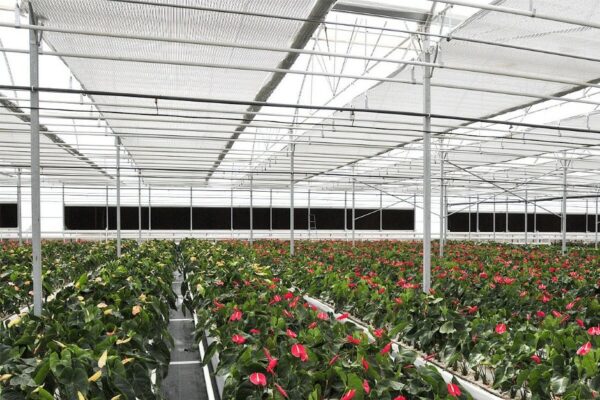At Hortinergy, We’re pleased to share with you our expertise built over more than 20 years by offering specialized technical training focused on Dehumidification and Destratification Training in Greenhouses.
- This training is designed to help you better understand and implement effective climate control strategies,
- optimize energy use,
- and support your clients in achieving high-performance greenhouse environments.
Whether you are a grower, crop consultant, greenhouse or energy advisor, builder, equipment supplier, or part of the research and academic community, this training will provide valuable insights and practical tools tailored to your field.
What is Dehumidifcatain and Destrafication Training?
In greenhouse climate management, dehumidification and destratification serve two distinct but complementary purposes.
Dehumidification refers to the process of removing excess moisture from the air to maintain optimal humidity levels inside the greenhouse. Proper humidity control helps prevent fungal diseases, reduces condensation, and creates a healthier environment for plants to grow.
On the other hand, destratification focuses on eliminating temperature layers that form vertically within the greenhouse. Warm air tends to rise and accumulate near the ceiling, while cooler air stays close to the ground. This temperature stratification can cause uneven crop growth and inefficient energy use. Destratification systems, usually using fans, circulate air to create a uniform temperature throughout the space.
Our dehumidification and destratification training covers both of these critical aspects, teaching greenhouse professionals how to balance moisture control with air circulation to optimize plant health, energy efficiency, and overall climate stability.
What are the Benefits of this Dehumidification and Destratification Training ?
1. Preventing Crop Diseases
- High humidity promotes fungal diseases, powdery mildew, and downy mildew.
- Dehumidification helps maintain optimal humidity levels (typically 70–85% for most crops), reducing disease risk.
- Training teaches how and when to ventilate or dehumidify effectively without shocking plants.
2. Improving Air Circulation and Temperature Uniformity (Destratification)
- Warm air rises, causing temperature stratification (warmer near the ceiling, cooler near the crop canopy).
- Destratification uses fans to mix air, ensuring uniform temperature and CO₂ distribution.
- Training ensures staff know how to set up and maintain destratification systems properly.
3. Enhancing Energy Efficiency
- Poor airflow or excess humidity can lead to overuse of heating, cooling, or ventilation systems, driving up energy costs.
- Training helps identify energy-efficient strategies (e.g., night venting, thermal screens, fan placement).
Why Choose Hortinergy’s Dehumidification and Destratification Training?
Our training integrates seamlessly with our advanced climate control software, providing a comprehensive approach to greenhouse climate management. Participants will learn to:
- Model and simulate indoor climate conditions.
- Analyze energy consumption patterns.
- Compare different technical solutions to find the best configuration for their specific needs.
Whether you’re aiming to improve crop yield, reduce energy costs, or enhance overall greenhouse performance, our dehumidification and destratification training equips you with the knowledge and tools to succeed.

How Hortinergy Supports Your Greenhouse Climate Goals with the Dehumidification and Destratification Training
Our dehumidification and destratification training is complemented by the powerful simulation capabilities of Hortinergy’s climate control software. This software allows you to:
- Model the inner climate on an hourly basis throughout the year.
- Simulate the effects of different equipment like cooling systems, ventilation, and lighting.
- Predict energy consumption and optimize system configurations before making investments.
